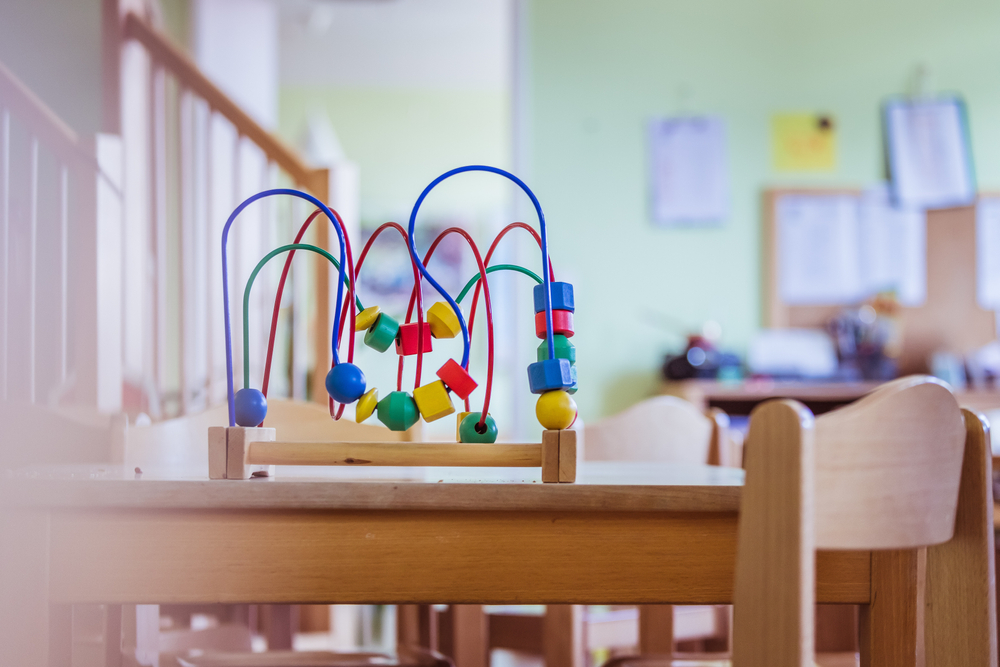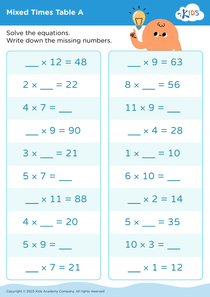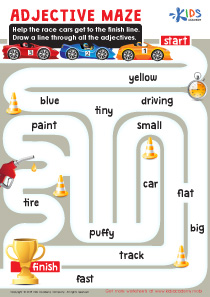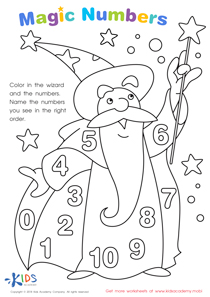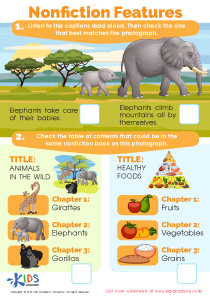Comparing sizes Extra Challenge Worksheets for Ages 3-6
5 filtered results
-
From - To
Enhance your child's understanding of sizes with our Comparing Sizes Extra Challenge Worksheets, perfect for ages 3-6. These fun, engaging worksheets help young learners develop critical thinking and observational skills by comparing objects of different sizes. Designed specifically to challenge and stimulate young minds, each activity encourages kids to identify, sort, and compare big, small, taller, and shorter items. These printable resources are ideal for both classroom and home use, providing an enjoyable learning experience that supports foundational math and cognitive skills. Help your child master size comparisons and boost their confidence with our expert-designed worksheets.
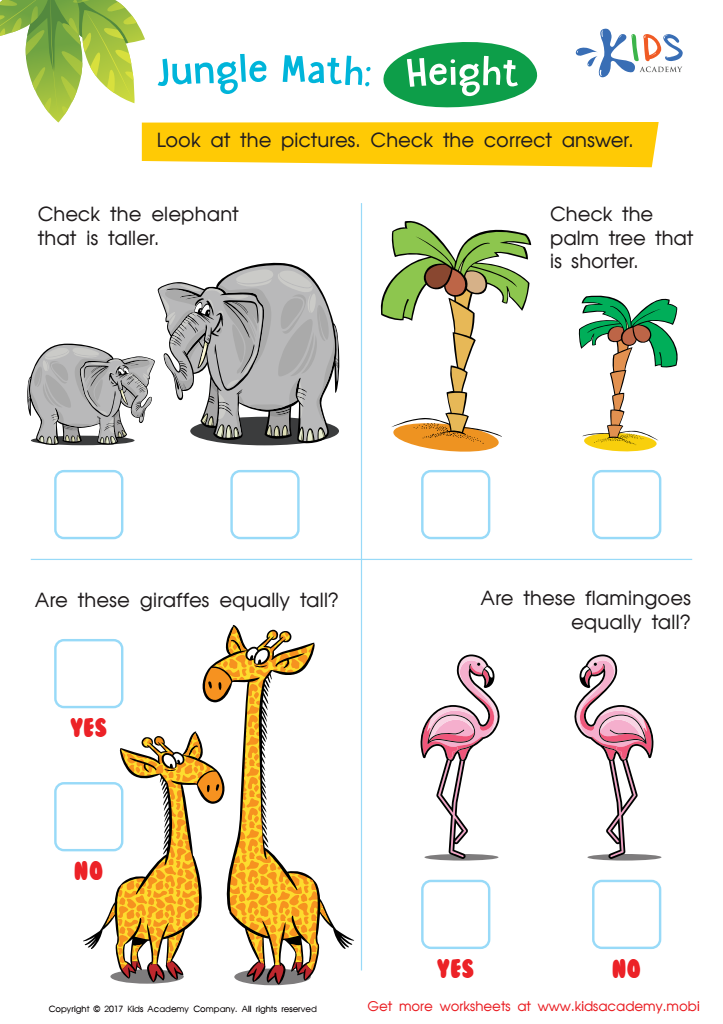

Which Is Taller Worksheet
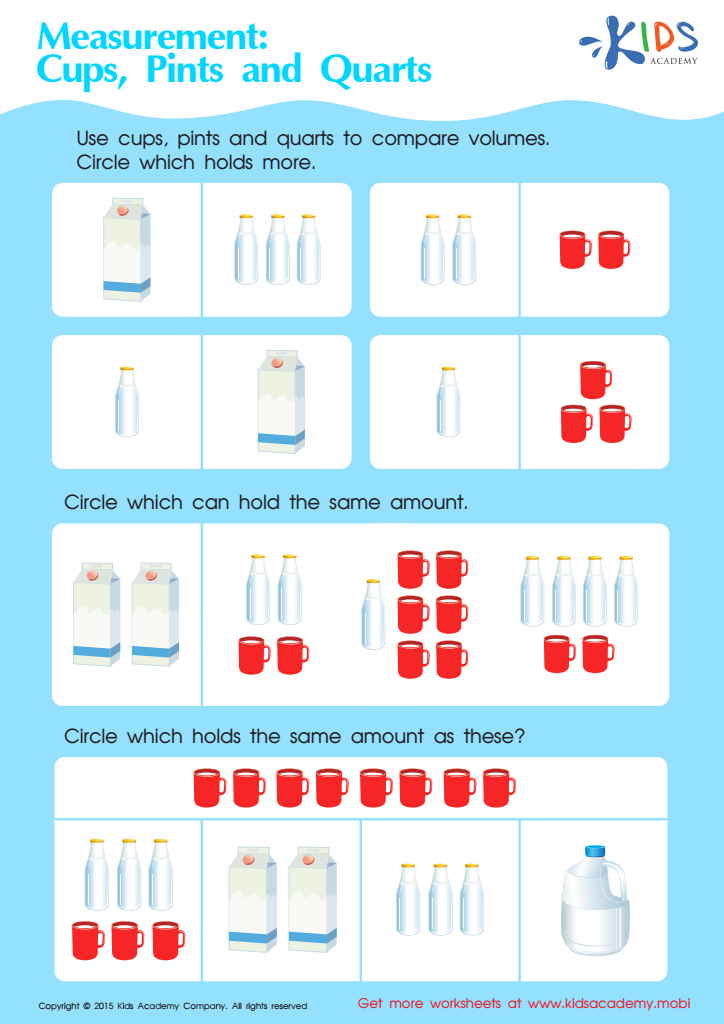

Measurement: Compare Volumes Worksheet


Cup Rhyming Words Worksheet
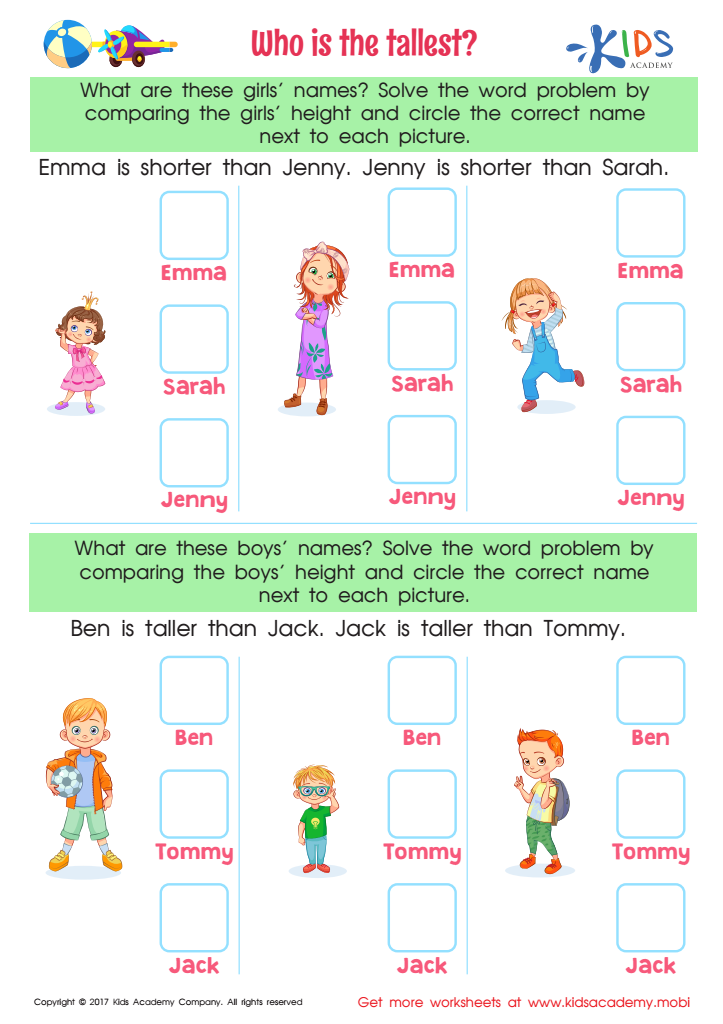

Who Tallest Printable


Fairy Tale Worksheet: Let's Compare
Understanding size differences is a foundational concept for young children in the 3-6 age range. It goes beyond a simple academic requirement and delves deep into cognitive, language, and social development. Parents and teachers should give this skill extra attention because it helps children develop critical thinking skills. When children compare sizes, they not only learn new vocabulary such as "bigger,” "smaller," "taller," but also begin to understand relationships and categories.
Fostering these skills can enhance mathematical understanding. Concepts like measurement, spatial reasoning, and geometry have their roots in such early comparisons. When children understand size differences, they are better able to participate in everyday activities, solve problems, and even understand safety—like knowing not to eat tiny objects because they could be harmful.
Additionally, these exercises encourage curiosity and engagement, making learning fun. Activities that challenge children to compare sizes build confidence as they successfully identify and articulate differences. Socially, these tasks provide opportunities for collaborative play, enhancing peer interactions and communication skills.
Altogether, emphasizing the practice of comparing sizes from a young age lays a strong foundation for lifelong learning and development, making it a crucial focus for both parents and teachers.
 Assign to My Students
Assign to My Students





%20(1).jpg)
